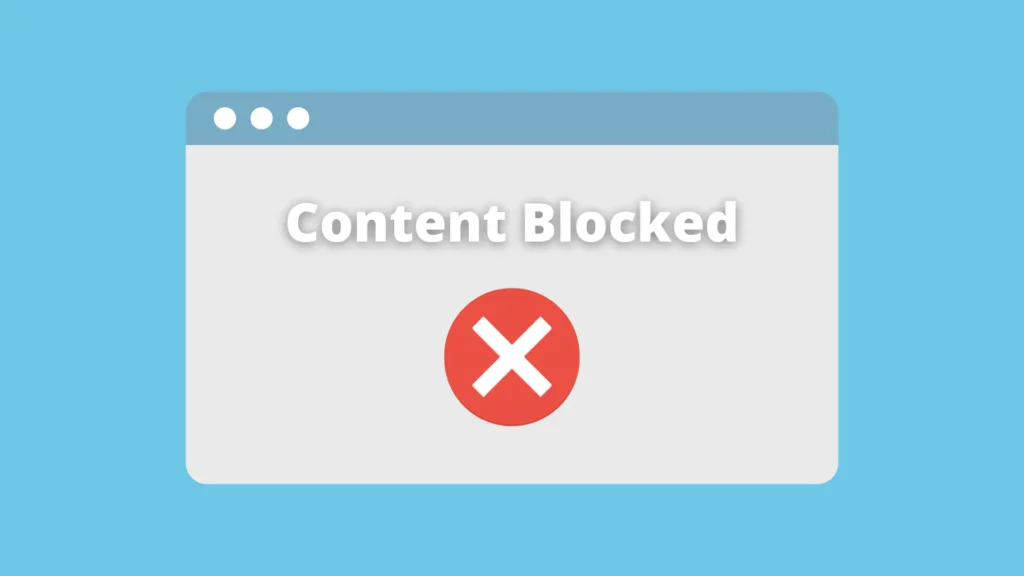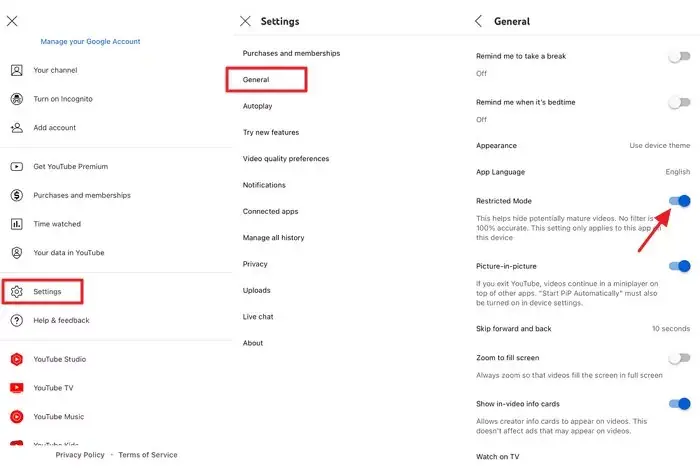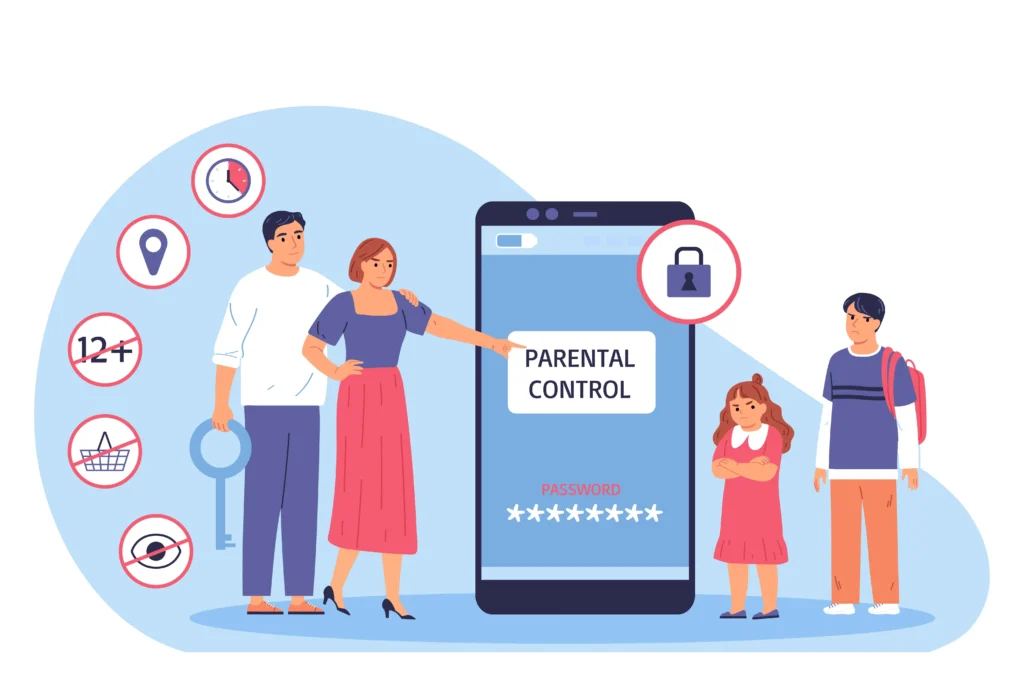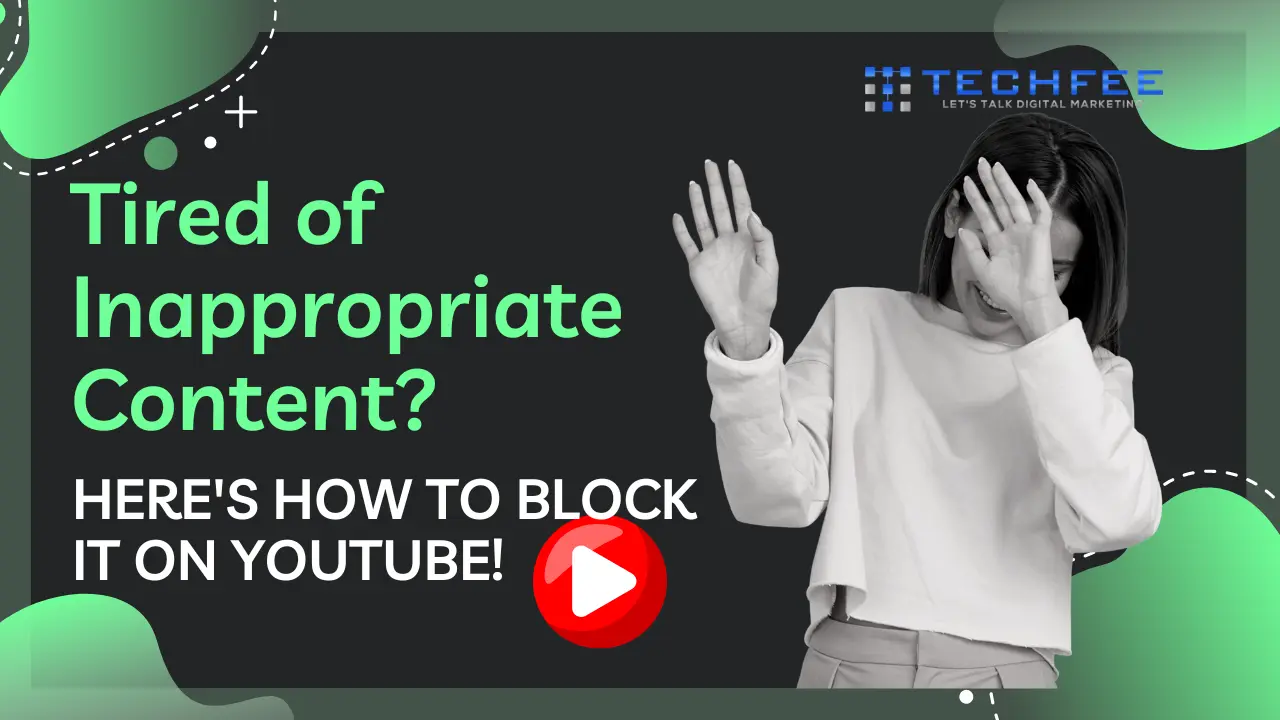Welcome to our comprehensive guide on “How to Block Bad Content on YouTube,” where we’ll equip you with the tools and knowledge necessary to navigate the digital world safely and responsibly.
Today, in the digital age, YouTube is one of the most important places to watch videos because it has so many videos for all kinds of hobbies and age groups.
There is, however, a chance that you might find content that isn’t appropriate for all viewers in this vast ocean of content.
There is a wide range of “bad content” that could be harmful, from explicit images to harmful ideas.
So, it’s very important to understand why YouTube needs to filter material.
Following this introduction, we will talk more about the importance of content blocking and how it helps keep the internet safer by protecting users from inappropriate content.
We’ll also give you an overview of YouTube’s content policies, which will explain the rules and guidelines for what kind of material is allowed on the site.
Understanding the significance of content filtering and becoming acquainted with YouTube’s rules equips us for successfully managing the online world and encourages responsible content consumption.
Risks of Exposing Yourself to Bad Content

There are many risks that come with watching bad videos on YouTube that go beyond just being uncomfortable or unhappy.
To begin, it’s impossible to stress how bad it is for mental health. Constantly seeing or hearing disturbing or graphic content can make worry, stress, and even trauma worse, especially in kids or people who already have mental health problems.
In addition, the effect on behavior is a major worry. Watching or reading material that encourages violence, hate speech, or harmful ideas can make people less sensitive to them and could make bad behavior seem normal.
In the real world, this can show up as acts that add to problems like cyberbullying or discrimination.
Besides that, there are legal issues to think about. Participating in illegal or protected content not only goes against YouTube’s community rules, but it could also result in fines or even criminal charges.
As a result, being aware of the risks that come with viewing harmful content is important for maintaining personal safety, encouraging good behavior, and following the law.
How YouTube's Content Filtering Works
To successfully block bad content on YouTube, you need to know how the platform’s content filtering works.
To begin, YouTube uses complex algorithms driven by machine learning to look at videos and put them into groups based on what they are about.
To figure out if a video is good for different groups of people, these algorithms look at things like keywords, metadata, and user engagement numbers.
YouTube also has manual review processes that real people run to look over material that might have gotten past automated filters or needs to be judged subjectively.
This mix of computer-based analysis and human oversight helps make sure that material filtering is more thorough.
YouTube also has filters that users can control, so they can change how they watch videos based on their own tastes and safety concerns.
Users can customize their browsing experience even more by using tools like restricted mode to block certain channels or keywords or filter out inappropriate material.
With algorithms, human review processes, and user-controlled filters, YouTube’s content filtering system works in many ways to make the site safer and more enjoyable.
Step-by-Step Guide on How to Block Bad Content on YouTube

A. Setting Up Restricted Mode
First, go to the YouTube website or app and sign in to your account.
Once you’re logged in, click on the personal icon in the upper right corner. Use the drop-down button to find “Settings.”
Scroll down until you find “Restricted Mode” under the “General” tab in the settings menu.
To turn on Restricted Mode, flip the switch. This feature blocks material that might be inappropriate for kids, making browsing safer for everyone, especially families and kids.
B. Using YouTube's Built-in Filters
YouTube has built-in filtering options that let users choose what kind of material they see.
To begin, you can sort videos by topic. While you’re on YouTube, look for the “Filter” button on the left, below the search bar. After clicking on it, choose “Category.”
By picking categories like “Gaming,” “Music,” or “Education” here, you can narrow down your search results and skip over stuff you don’t want to see.
When you sort by keywords, you can also block certain topics or themes. After you look for something on YouTube, click on “Filter” again.
To do it again, click “Keywords.” Type in words or phrases like “violence,” “explicit,” or “controversial” that are connected to the content you don’t want to see.
YouTube will remove videos with these keywords from your search results, so you see less inappropriate material.
C. Third-Party Browser Extensions for Enhanced Filtering
Third-party browser extensions can add extra layers of security for users who want more advanced filtering choices. Start by going to the extension store for your browser.
For Google Chrome, this would be the Chrome Web Store, and for Mozilla Firefox, it would be the Firefox Add-ons page.
Look for blocking add-ons that you can trust, like “Video Blocker” or “YouTube Kids.” Install the app you want and then follow the on-screen instructions to set it up and make changes.
Once these extensions are added, they usually let you change the filtering criteria to suit your needs.
This could mean blocking certain channels, keywords, or even whole groups of material. You can change the filters in the extension’s settings menu to get the amount of protection you want.
With third-party browser extensions, you can have more control over how you browse YouTube, making it a better and more enjoyable place to watch.
Leveraging Parental Controls for Enhanced Protection

Using parental controls is important for protecting kids and making sure they have a safer time viewing YouTube.
Utilizing YouTube Kids, a platform created especially for younger viewers, is one effective way. YouTube Kids has videos that are appropriate for kids’ ages, educational videos, and parental controls to keep kids safe from possibly harmful content.
Parents can make profiles for each of their children, which let them change settings like content filters, time limits, and search restrictions to fit the age and hobbies of their child.
YouTube Kids also has a team of human reviewers who choose and approve material by hand, which is another way they make the site safer.
Furthermore, adding parental limits to different devices and platforms adds an extra layer of security across all of them.
A lot of gadgets, like smartphones, tablets, smart TVs, and game consoles, have parental controls built in that let parents keep an eye on and control what their kids do online.
You can usually limit access to certain apps or websites, set time limits for screen time, and filter material based on age ratings or other criteria with these controls.
Parents can make the internet a safer place for their kids by using both YouTube Kids and the parental controls that come with each device. This way, their kids can enjoy YouTube videos without seeing any inappropriate content.
Community Reporting: Contributing to a Safer YouTube
Participating in the reporting tools that YouTube offers is an important part of making the community better.
First, it’s important to find information that isn’t appropriate. This includes things like hate speech, graphic violence, or damaging false information that break YouTube’s community rules.
Users can spot this kind of material by looking at how it affects viewers and whether it follows YouTube’s rules for what is appropriate and legal.
Once problematic material is found, YouTube has a number of ways to report it so that it can be removed.
The three-dot menu next to the content and choosing “Report” from that menu will mark videos or comments for review.
YouTube also has specific reporting sections that let you label the type of violation, like harassment, spam, or being naked.
When reporting material, it’s important to give moderators as much information and background as possible to help them understand the problem correctly.
This could mean giving specific timestamps, describing the content, and saying why it breaks community rules.
By following best practices for reporting, YouTube users can help make the site safer and keep its reputation for being honest and reliable.
Understanding and Adjusting Privacy Settings
To control your online experience and avoid seeing material you don’t want to see, you need to know how to use YouTube’s privacy settings and make changes to them as needed.
To begin, users can make their YouTube experience fit their tastes and ideals by changing the privacy settings.
This includes controlling who can see their subscribed videos, liked videos, and search history. This makes it less likely that the platform will suggest inappropriate material.
Content filtering can also be improved by changing ideas and recommendations. Users can go to “Privacy” or “Recommendations” in their YouTube settings to change how they want to be notified about suggested videos, channels, and topics.
By turning on or off settings like “Pause Watch History” or “Disable Watch and Search History,” YouTube users can stop the site from making suggestions based on what they’ve watched in the past, which lowers the risk of seeing inappropriate material.
By understanding and managing their privacy settings, YouTube users can take charge of their experience and make it safer and more fun to browse.
Educating Yourself and Others about Online Safety
The best way to block bad content on YouTube is to learn about internet safety and teach others as well.
To begin, it is very important to teach people of all kinds how to use technology properly.
This means teaching people how to think critically about what they read online, spot possible dangers, and use safety techniques while they browse.
People can confidently and safely manage the digital world if they are taught things like how to spot fake news, understand their privacy settings, and spot online threats.
Keeping lines of contact open with family and friends is also a very important part of staying safe online.
Promoting open and honest talks about how people use the internet, sharing experiences, and talking about worries creates a safe space where people can get help and advice when they are in tough situations online.
Putting an emphasis on digital literacy and open communication can give us and others the tools we need to make smart choices and make the internet a better place for everyone.
Dealing with False Positives: Balancing Safety and Freedom
It is important to deal with false positives when blocking bad material on YouTube while finding a balance between safety and freedom.
Filters that are too strict may sometimes mistakenly flag or block material that doesn’t actually break the rules.
In these situations, it’s very important to have ways to deal with these false results correctly.
Through YouTube’s appeals process, users can ask that content removal or flagging choices be overturned by giving more information or proof to support their case.
Fine-tuning filters for a more personalized experience can also help cut down on false results while still keeping your browsing safe.
People can change their content filtering settings to better match their hobbies and values by changing things like keyword filters, content categories, and user preferences.
Finding the best balance between safety and freedom takes a nuanced approach, where users interact with content filtering systems while keeping in mind that they might give false positives and that enforcement needs to be flexible.
Managing YouTube Content Across Multiple Devices
Managing YouTube material on multiple devices is important to keep your browsing experience safe and consistent.
For starters, syncing settings and preferences across devices makes sure that users’ privacy and content filtering options stay the same no matter what device they’re using.
YouTube has features like account sharing that let users connect their accounts on different devices so that when settings are changed on one device, they are applied to all of them.
This synchronization makes it easier to manage content choices and makes sure that switching between devices is smooth, without putting safety at risk.
Also, making sure that protection is the same across all devices is very important for keeping bad material out.
By using the same privacy settings and filtering criteria on all devices, users can lower their chances of seeing inappropriate content on YouTube, no matter where they view it.
This level of uniformity makes content blocking systems work better and makes browsing safer overall.
Users can be sure that their content preferences and security measures will stay the same whether they are browsing on a computer, smartphone, or smart TV.
This gives them peace of mind and a better watching experience on all devices.
Staying Informed: Keeping Up with YouTube's Policies and Updates
It is important to know about YouTube’s rules and updates so that you can block harmful material and keep your browsing safe.
For starters, following official YouTube channels for updates makes sure that users know right away when the platform’s rules, features, and community standards change.
Through its official channels, YouTube often shares important news, like changes to how material is moderated or new safety features.
Users can stay up to date on the latest events by subscribing to these channels. They can then change how they filter material to match.
Also, keeping up with news and discussions in your field can help you understand bigger trends and problems that have to do with internet safety and content moderation.
Users can get a better sense of how online content is changing by following news sites that cover internet policy and regulation and keeping up with discussions in the digital marketing and tech communities.
Experts in the field often analyze and comment on YouTube’s rules and privacy policies.
These comments give users useful information that can help them decide how to block material and stay safe.
Users can stay up to date on the latest developments and best ways to block bad material on YouTube by combining updates from official YouTube channels with information from news and discussions in the industry.
This proactive method gives users the freedom to change their tactics as threats and challenges change, making browsing safer and more enjoyable for everyone.
Exploring Alternative Platforms for Safer Content Consumption
Users can get more ways to access online content while putting safety and health first by looking into other sites for safer content consumption.
First, new platforms are popping up that are all about safety and are aimed at people who want to be in a more controlled and moderated setting.
To make sure that users of all ages have a better browsing experience, these platforms often have stricter rules about what can be posted, stronger moderation, and more safety features.
Users can find new ways to consume content without sacrificing safety or quality by checking out these new sites.
Looking at alternatives to YouTube can also help people learn more about digital media in general and give them ideas on how to manage communities and moderate material in different ways.
Even though YouTube is still one of the most popular sites for sharing videos, there are many others that offer different features and areas of interest.
Platforms like Vimeo, Dailymotion, and Twitch offer different places for people to make and watch video, and each one has its own pros and cons.
By looking at these options, users can choose where to consume content based on their preferences for safety, community involvement, and variety of material.
In conclusion, looking into other platforms for safer content consumption gives people more ways to access online content and gives them the power to put their safety and well-being first.
Users can find new communities, content creators, and watching experiences that fit their values and tastes, whether they choose new platforms that focus on safety or look at alternatives to YouTube.
Users can take charge of their online life and have a safer, more enjoyable browsing experience by staying aware and willing to try out new platforms.
Navigating the Challenges of Content Moderation
To deal with the difficulties of content filtering, one must carefully think about moral issues and find a delicate balance between safety and freedom of speech.
At first, content reviewers have to think about what is right and wrong when they decide what content is acceptable and what content breaks community rules.
These choices can have big effects on users, content authors, and the internet community as a whole.
Moderators of content must follow moral standards like being fair, unbiased, and respectful of differences.
They must also make sure that their actions are in line with the platform’s policies and beliefs.
Also, finding the right balance between safety and freedom of speech is hard to do when moderating material.
Free speech is a basic right that should be respected, but it needs to be weighed against the need to keep users safe from material that is harmful or inappropriate.
When you moderate content, you have to weigh these different goals and make decisions that are fair to both.
To find this balance, you need to think carefully about the situation, the intention, and the harm that could happen.
You also need to keep talking with stakeholders to make sure that policies and practices are in line with how society’s norms and standards change over time.
Conclusion
To sum up, blocking bad content on YouTube needs a mix of the key strategies and tools described in this guide.
Users can make YouTube a safer place for themselves and their families to browse by using the site’s content filtering tools, setting up parental controls, and keeping up to date on platform updates.
People can make smart choices and have a good time online if they know the risks of seeing harmful content, teach others about online safety, and know how to deal with the difficulties of content moderation.
But it’s important to keep in mind that staying safe online is an ongoing process that needs constant attention and change.
As technology changes and new problems arise, it is important to stay educated and take the initiative to put safety measures into place.
We can make the internet a better place for everyone by working together as a group and putting safety and well-being first.
As this complete guide on How to Block Bad Content on YouTube comes to a close, we urge you to take steps to protect your online experience.
Sign up for our daily newsletters to stay up to date on the latest changes and best practices.
If you sign up, you’ll get regular updates, tips, and information that will help you stay safe online.
We also want to hear your thoughts and comments on this post. You can leave a comment below with your ideas, questions, or thoughts.
We can improve and make our material more useful for you based on what you tell us.
Finally, please don’t forget to share this guide with your family, friends, and social networks if it was helpful.
Let’s work together to make the internet a better and more fun place for everyone.
Frequently Asked Questions
How Does Youtube Determine What Content Is "Bad"?
YouTube determines "bad" content using algorithms, community guidelines, and human moderators to flag and remove content that violates its policies.
Can Content Filtering Be Bypassed?
Content filtering can be bypassed by creators using deceptive tactics or by users disabling filters, but YouTube continuously updates its algorithms to improve effectiveness.
Is Content Filtering Effective For All Types Of Content?
Content filtering is effective for most types of content, but it may not catch all inappropriate material due to the vast volume of uploads and evolving tactics by creators.
What Should I Do If I Encounter Inappropriate Content Despite Filters?
If you encounter inappropriate content despite filters, report it to YouTube by flagging the video or using the reporting feature to alert moderators.
Are There Legal Implications For Blocking Certain Content On Youtube?
Blocking certain content on YouTube generally does not have legal implications as long as it aligns with YouTube's community guidelines and does not infringe on free speech rights.
How To Avoid 18+ Content On Youtube?
To avoid 18+ content on YouTube, enable Restricted Mode in your account settings or use parental control features on devices.
How To Block Inappropriate Content On YouTube App?
To block inappropriate content on the YouTube app, enable Restricted Mode in the app settings or use third-party parental control apps to limit access to certain content.












